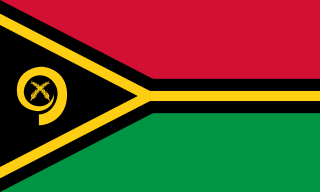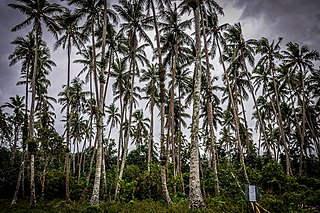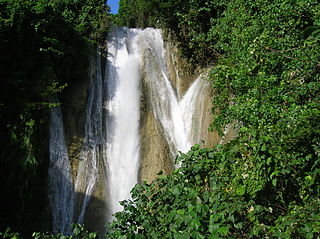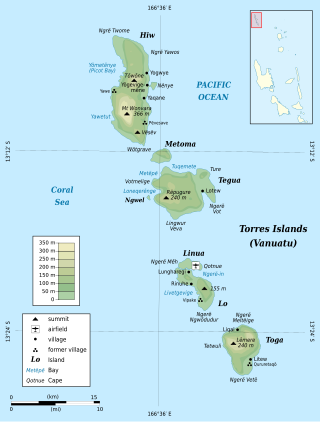
Vanuatu, officially the Republic of Vanuatu, is an island country in Melanesia, located in the South Pacific Ocean. The archipelago, which is of volcanic origin, is 1,750 km (1,090 mi) east of northern Australia, 540 km (340 mi) northeast of New Caledonia, east of New Guinea, southeast of Solomon Islands, and west of Fiji.

Espiritu Santo is the largest island in the nation of Vanuatu, with an area of 3,955.5 km2 (1,527.2 sq mi) and a population of around 40,000 according to the 2009 census.

Pentecost Island is one of the 83 islands that make up the South Pacific nation of Vanuatu.

A nakamal is a traditional meeting place in Vanuatu. It is used for gatherings, ceremonies and the drinking of kava.
Sa or Saa language is an Austronesian language spoken in southern Pentecost Island, Vanuatu. It had an estimated 2,500 speakers in the year 2000.
Apma is the language of central Pentecost island in Vanuatu. Apma is an Oceanic language. Within Vanuatu it sits between North Vanuatu and Central Vanuatu languages, and combines features of both groups.
Sowa was the original language of south-central Pentecost island in Vanuatu. In the 20th century it was totally displaced by Apma, a neighbouring language. Sowa was closely related to Ske, another south Pentecost language.

Mota is an island in the Banks group of northern Vanuatu. Its population – today about 700 people – speak the Mota language, which Christian missionaries of the Anglican Church used as a lingua franca in parts of Melanesia.

Lonorore Airport or Lonoror is an airport on south-western Pentecost Island, Vanuatu, 3 km south of Baravet village.
Sara Airport is an airport on northern Pentecost Island, Vanuatu.

Religion in Vanuatu is dominated by various branches of Christianity. Vanuatu is an archipelago made up of 13 larger islands, and approximately 70 smaller surrounding islands, each home to multitudes of diverse cultural and religious communities.
The North Vanuatu languages form a linkage of Southern Oceanic languages spoken in northern Vanuatu.
Raga is the language of northern Pentecost Island in Vanuatu. Like all Vanuatu languages, Raga belongs to the Oceanic subgroup of the Austronesian languages family. In old sources the language is sometimes referred to by the names of villages in which it is spoken, such as Bwatvenua (Qatvenua), Lamalanga, Vunmarama and Loltong.
Ske is an endangered language of south-western Pentecost island in Vanuatu. Ske is an Oceanic language.

Vanuu, also known as Waterfall Village, is a large settlement on the southwestern coast of Pentecost Island in Vanuatu. The village consists of several scattered groups of houses within an ageing coconut plantation.

Melsisi is a large settlement and Catholic mission on the west coast of Pentecost Island, Vanuatu.
Grade-taking is a term used in anthropology for social systems under which individuals rise in status and authority by performing a series of ceremonies. Grade-taking was the system of leadership in pre-colonial societies of northern Vanuatu, typically involving the killing of valuable pigs; it is still actively practiced in some areas.











